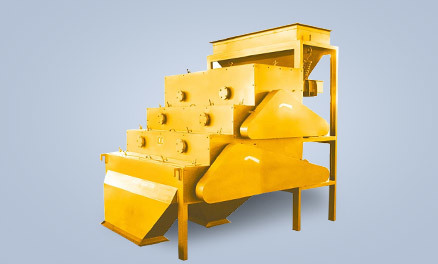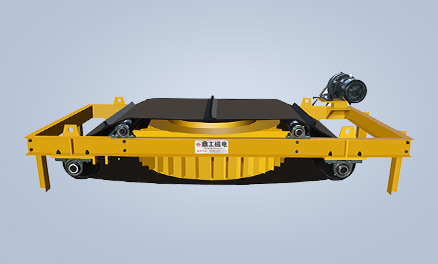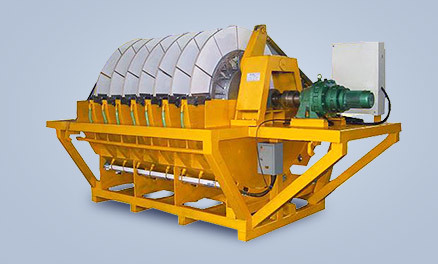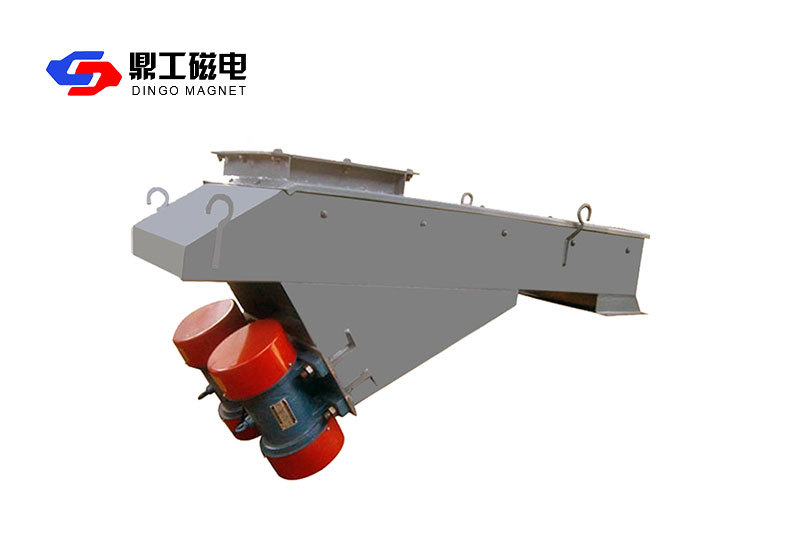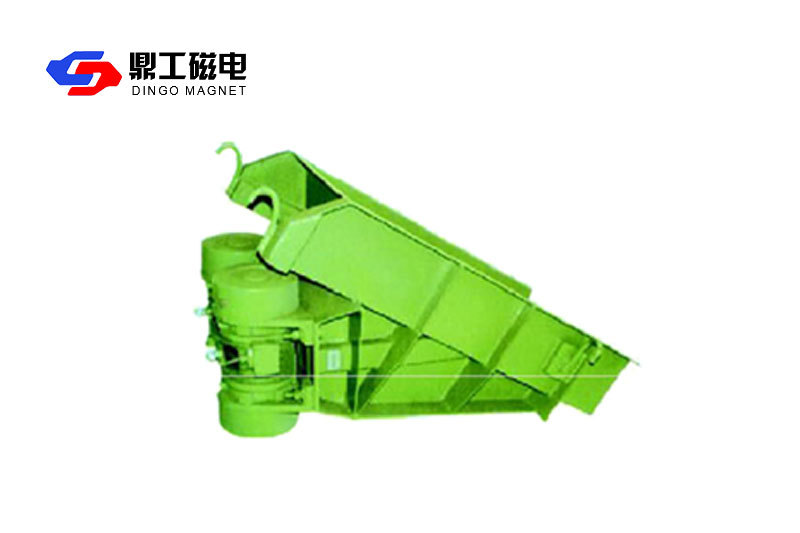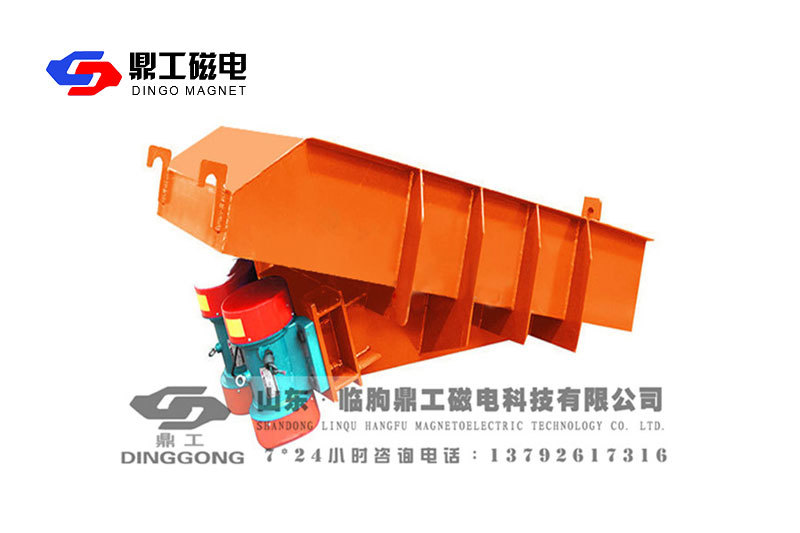PRODUCTS
DZ series motor vibration feeder
Category:
Keywords:
Tel:
Email:
DZ series motor vibration feeder
The DZ motor vibration feeder is suitable for uniformly, quantitatively, and continuously feeding block, granular, and powder materials from the storage bin to the receiving equipment. In the sand and gravel production line, it can continuously and evenly feed the crushing machinery and coarse screen the materials. It is widely used in industries such as metallurgy, coal, chemical, building materials, ceramics, abrasive tools, and grain. Performance characteristics of vibration feeder: stable vibration, reliable operation, and long service life; The excitation force can be adjusted, and the flow rate can be changed and controlled at any time, making adjustment convenient and stable; The vibration motor is the excitation source, with low noise, low power consumption, good adjustment performance, and no material impact phenomenon. Simple structure, reliable operation, convenient adjustment and installation, light weight, small volume, and convenient maintenance. When using a closed structure body, it can prevent dust pollution.
Installation and debugging
1. When using a vibrating feeder for batching and quantitative feeding, in order to ensure uniform and stable feeding and prevent material flow, it should be installed horizontally. For continuous feeding of general materials, it can be installed with a downward tilt of 10 °. For sticky materials and materials with high water content, installation can be done by tilting down 15 °.
2. After installation, the feeder should have a 20mm clearance for horizontal movement, and the suspension device should be flexibly connected.
Before the air test, all bolts should be tightened once, especially the foundation bolts of the vibration motor. They should be tightened again after continuous operation for 3-5 hours.
4. During the test run, the two vibration motors must rotate in opposite directions to ensure the stability of current and noise. If any abnormalities are found, they should be stopped in a timely manner for handling.
5. The motor bearings should be lubricated once every 2 months, and lubricating oil should be added once a month during high temperature seasons.
6. For materials difficult to transport (such as talcum powder, titanium dioxide, white mud, flour, clay, etc.), as well as hydrophilic materials with large water content, the output should be determined according to the test. If necessary, tilt and install the tank of the vibrating feeder appropriately (usually inclined downwards by 10-15 degrees) to increase the feeding amount.
Maintenance and requirements
1. During the operation of the feeder, the amplitude, current of the vibrating motor, and surface temperature of the motor should be regularly checked. The amplitude should be uniform before and after, without shaking left and right, and the current of the vibrating motor should be stable. If any abnormal situation is found, it should be immediately stopped for handling.
2. The lubrication of the vibration motor bearings is the key to the normal operation of the entire feeder. During use, the bearings should be regularly filled with molybdenum dioxide 2 # lubricating grease, which should be added every two months. During high temperature seasons, the bearings should be added once a month. The motor should be disassembled and repaired every six months, and the internal bearings should be replaced.
Operational definition
1. Preparation before starting:
(1) Read the duty records and handle any remaining issues from the previous shift:
(2) Check and eliminate any debris that may affect the movement of the machine body, such as materials, between the machine body and the chute, spring, and bracket;
(3) Carefully check whether all fasteners are fully tightened;
(4) Check whether the lubricating oil inside the exciter is higher than the oil level;
(5) Check if the transmission belt is in good condition; If any damage is found, it should be replaced; When there is oil stains, wipe them clean with a cloth;
(6) Check if the protective devices are in good condition and promptly eliminate any unsafe phenomena.
2. Starting:
After inspection, the machine and transmission parts are in normal condition before starting;
⑵ This machine is only allowed to start without load;
After starting, if any abnormal phenomena are found, the engine should be stopped immediately. Only after identifying and eliminating the abnormal situation can the engine be restarted.
3. Use:
After the machine stabilizes vibration, it can only be operated with materials;
⑵ The feeding should meet the requirements of load testing;
(3) The shutdown should be carried out in the process direction, and it is prohibited to stop with materials or continue feeding during or after the shutdown.
Usage conditions
(1) The ambient temperature shall not exceed+40 ℃;
When the ambient temperature is 20 ± 5 ℃, the relative humidity of the surrounding medium shall not exceed 85%;
There is no severe corrosion or medium that affects electrical insulation around.
Security Technology
Regular maintenance and repair are important means to extend the service life of the machine and ensure normal operation, and users should pay attention to them. For lubrication, the following points should be noted:
(1) The machine adopts thin oil splash lubrication, and the lubricating oil shall be determined according to the use location and temperature conditions, generally using gear oil;
(2) It should be ensured that the thin oil surface in the exciter is higher than the oil level (filled through the joint elbow), and must be replaced every 3-6 months. When changing the oil, clean gasoline or kerosene should be used to clean the oil tank, bearing raceway, and gear surface.
2. Safety technology:
(1) Operators of this machine must undergo safety technical education;
During operation, it is strictly prohibited to stand by the machine, touch the machine body with hands, adjust, clean, or repair it;
(3) Machine equipment should be grounded, wires should be reliably insulated, and installed in serpentine tubes. Regularly check the motor wiring for wear and leakage.
Product parameters
| Specification and model | Processing capacity ≤t/h | Feeding groove ruler B×L×Hmm | Particle size ≤mm | Operation mode | Vibration motor | |
| Model | Model | |||||
| DZ30-4 | 15 | 300×800×120 | 120 | Continuation | 2.5-4 | 0.18×2 |
| DZ40-4 | 40 | 400×1000×160 | 5-4 | 0.25×2 | ||
| DZ50-4 | 50 | 500×1100×200 | 8-4 | 0.40×2 | ||
| DZ60-4 | 85 | 600×1200×250 | 150 | 16-4 | 0.75×2 | |
| DZ70-4 | 100 | 700×1300×280 | 180 | 16-4 | 0.75×2 | |
| DZ80-4 | 200 | 800×1600×300 | 200 | 16-4 | 0.75×2 | |
| DZ90-4 | 220 | 900×1600×350 | 250 | 20-4 | 1.1×2 | |
| DZ100-4 | 240 | 1000×1600×350 | 32-4 | 1.5×2 | ||
| DZ110-4 | 400 | 1100×1800×350 | 350 | 32-4 | 1.5×2 | |
| DZ120-4 | 440 | 1200×2000×400 | 32-4 | 1.5×2 | ||
| DZ130-4 | 475 | 1300×2200×400 | 32-4 | 1.5×2 | ||
| DZ70-6 | 80 | 700×1300×280 | 150 | 20-6 | 1.5×2 | |
| DZ80-6 | 160 | 800×1600×300 | 180 | 30-6 | 2.2×2 | |
| DZ90-6 | 240 | 900×1600×350 | 240 | 40-6 | 3.0×2 | |
| DZ110-6 | 320 | 1000×1600×350 | 50-6 | 3.7×2 | ||
| DZ130-6 | 400 | 1300×2200×400 | 320 | 50-6 | 3.7×2 | |
| DZ150-6 | 500 | 1500×2400×400 | 50-6 | 3.7×2 | ||
Related Products


